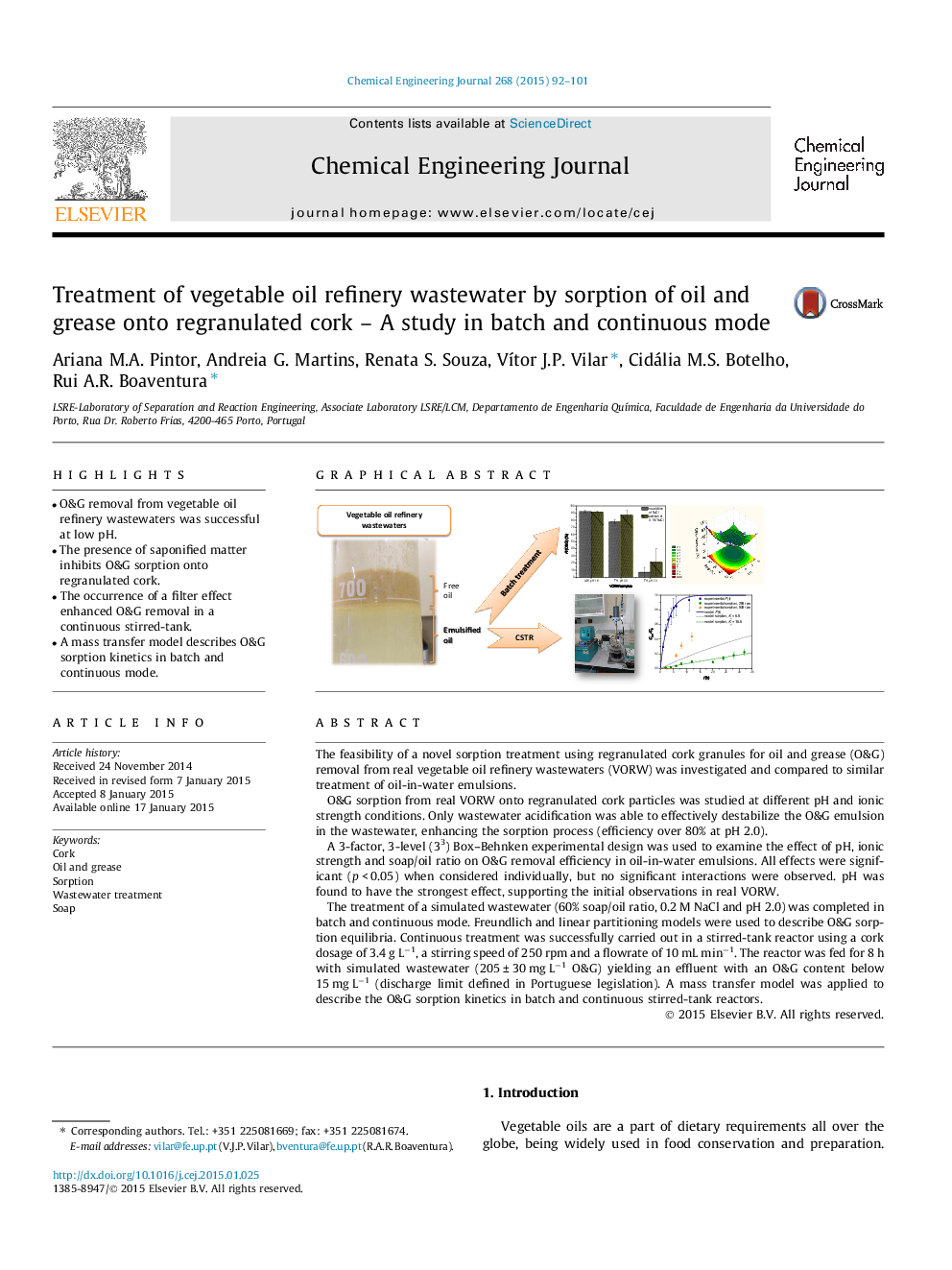| کد مقاله | کد نشریه | سال انتشار | مقاله انگلیسی | نسخه تمام متن |
|---|---|---|---|---|
| 146562 | 456373 | 2015 | 10 صفحه PDF | دانلود رایگان |
• O&G removal from vegetable oil refinery wastewaters was successful at low pH.
• The presence of saponified matter inhibits O&G sorption onto regranulated cork.
• The occurrence of a filter effect enhanced O&G removal in a continuous stirred-tank.
• A mass transfer model describes O&G sorption kinetics in batch and continuous mode.
The feasibility of a novel sorption treatment using regranulated cork granules for oil and grease (O&G) removal from real vegetable oil refinery wastewaters (VORW) was investigated and compared to similar treatment of oil-in-water emulsions.O&G sorption from real VORW onto regranulated cork particles was studied at different pH and ionic strength conditions. Only wastewater acidification was able to effectively destabilize the O&G emulsion in the wastewater, enhancing the sorption process (efficiency over 80% at pH 2.0).A 3-factor, 3-level (33) Box–Behnken experimental design was used to examine the effect of pH, ionic strength and soap/oil ratio on O&G removal efficiency in oil-in-water emulsions. All effects were significant (p < 0.05) when considered individually, but no significant interactions were observed. pH was found to have the strongest effect, supporting the initial observations in real VORW.The treatment of a simulated wastewater (60% soap/oil ratio, 0.2 M NaCl and pH 2.0) was completed in batch and continuous mode. Freundlich and linear partitioning models were used to describe O&G sorption equilibria. Continuous treatment was successfully carried out in a stirred-tank reactor using a cork dosage of 3.4 g L−1, a stirring speed of 250 rpm and a flowrate of 10 mL min−1. The reactor was fed for 8 h with simulated wastewater (205 ± 30 mg L−1 O&G) yielding an effluent with an O&G content below 15 mg L−1 (discharge limit defined in Portuguese legislation). A mass transfer model was applied to describe the O&G sorption kinetics in batch and continuous stirred-tank reactors.
Figure optionsDownload as PowerPoint slide
Journal: Chemical Engineering Journal - Volume 268, 15 May 2015, Pages 92–101
